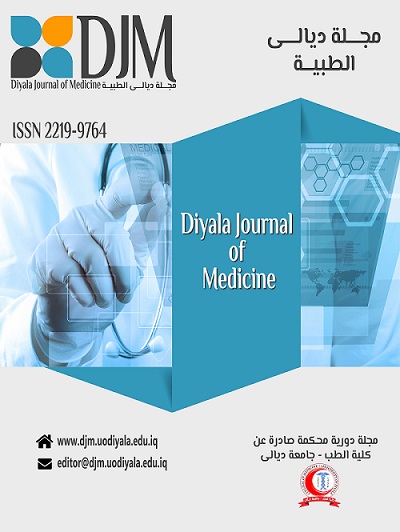Abstract
Background: Cervical lymphadenopathy is a common presenting complaint in an out-patient
clinic in Baquba Teaching Hospital. There are various causes which can cause enlargement
of cervical lymph nodes starting from simple inflammation to malignant causes. Tuberculous
adenitis is an important and familiar cause of cervical lymphadenopathy which is more
common in low socio-economic countries. Fine needle aspiration, incisional and/or excision
biopsies are performed to reach the definitive diagnosis.
Objective: To find out the most common causes of cervical lymphadenopathy in Baquba
Teaching Hospital.
Patients and Methods: It is a prospective study conducted in Baquba Teaching Hospital
over four years (2009-2013). Patients involved in the study are those with cervical
lymphadenopathy for more than 3 weeks that are not responding to medical treatment. Fine
needle aspiration and incisional or excisional biopsy performed for all patients.
Results: One hundred and eighty seven patients (103 males, 84 females) with cervical
lymphadenopathy were included in the study. The age range of the patients was from 10 to 75
years. The most common two cause were Tuberculous lymphadenitis 69(36.9%) and Hodgkin’s
lymphoma 61(32.6%). The aforementioned causes were followed in order of frequency by
reactive changes 23(12.3%) and non-specific inflammation 19(10.2%). The least common
causes were metastatic carcinomas 13(7%), non-Hodgkin lymphoma 2(1%).
Conclusion: Tubercular cervical lymphadenitis is a common disease in our country. So it is
recommend to exclude tubercular lymphadenopathy in any patient presented with chronic
lymphadenitis that is not responding to medical treatment. Early diagnosis & proper
treatment will lead to recovery of the disease and lessen the complications.
clinic in Baquba Teaching Hospital. There are various causes which can cause enlargement
of cervical lymph nodes starting from simple inflammation to malignant causes. Tuberculous
adenitis is an important and familiar cause of cervical lymphadenopathy which is more
common in low socio-economic countries. Fine needle aspiration, incisional and/or excision
biopsies are performed to reach the definitive diagnosis.
Objective: To find out the most common causes of cervical lymphadenopathy in Baquba
Teaching Hospital.
Patients and Methods: It is a prospective study conducted in Baquba Teaching Hospital
over four years (2009-2013). Patients involved in the study are those with cervical
lymphadenopathy for more than 3 weeks that are not responding to medical treatment. Fine
needle aspiration and incisional or excisional biopsy performed for all patients.
Results: One hundred and eighty seven patients (103 males, 84 females) with cervical
lymphadenopathy were included in the study. The age range of the patients was from 10 to 75
years. The most common two cause were Tuberculous lymphadenitis 69(36.9%) and Hodgkin’s
lymphoma 61(32.6%). The aforementioned causes were followed in order of frequency by
reactive changes 23(12.3%) and non-specific inflammation 19(10.2%). The least common
causes were metastatic carcinomas 13(7%), non-Hodgkin lymphoma 2(1%).
Conclusion: Tubercular cervical lymphadenitis is a common disease in our country. So it is
recommend to exclude tubercular lymphadenopathy in any patient presented with chronic
lymphadenitis that is not responding to medical treatment. Early diagnosis & proper
treatment will lead to recovery of the disease and lessen the complications.
Keywords
Cervical lymphadenopathy
Lymphoma.
Tubercular lymphadenopathy
